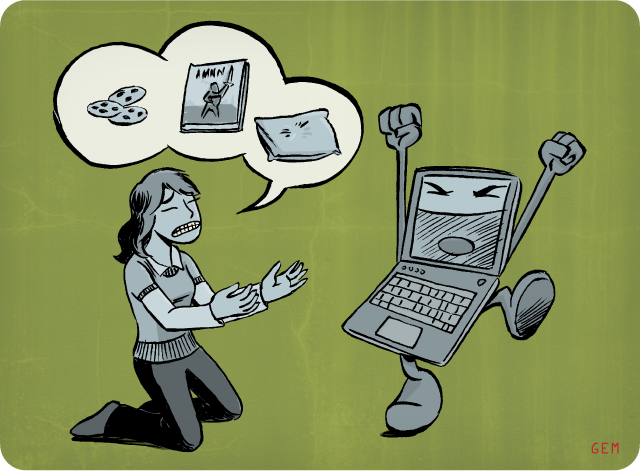| Nós nos esforçamos para localizar nosso site em tantas línguas quanto possível, no entanto esta página está traduzido usando o Google Translate máquina. | perto |
-
-
produtos
-
recursos
-
suporte
-
empresa
-
-
Página Principal
-
Recursos
- Blogue
- Por que eu preciso de drivers no meu PC?Why do I Need Drivers on my PC?
Por que eu preciso de drivers no meu PC?Why do I Need Drivers on my PC?
Por Steve Horton Dezembro 22, 2011Driver Reviver, Drivers, guest blog, rantz hoseleyNo Comments
Rantz Hoseley
Console gamer ou PC gamer? Eu costumava jogar apenas jogos no PC, mas a maioria do meu tempo de jogo agora é gasto no Xbox. O crescimento de gêneros e diferentes formas de entretenimento (Netflix, Vudu, UFC, Hulu, TMZ, lastFM, etc, etc) no Xbox praticamente garantiu que não importa o que eu estou com vontade, eu posso chegar lá sem preocupando-se com “minha placa de vídeo pode lidar com isso?”
Você acha que a iluminação LED nos monitores justifica o preço extra? De modo nenhum. Especialmente desde que esses mesmos recursos serão considerados “centrais” em monitores de menos de $ 200 no decorrer do ano.
Você compraria uma unidade de estado sólido? Sim, já tenho para os meus sistemas de desktop e para minhas unidades ‘portáteis’ que uso para transferir material de casa para o escritório ou para demonstrações. Eu tive erros de disco suficientes e reformatação de problemas com unidades de disco que estou muito feliz em ver o surgimento de SSDs acessíveis e de alta capacidade.
Rantz Hoseley tem trabalhado no mundo das histórias, através de histórias em quadrinhos, prosa e videogames, por mais de 25 anos trabalhando em marcas como Star Trek e Aladdin da Disney. Ele está atualmente criando novos territórios no mundo das narrativas digitais com sua empresa LongBox, Inc.
P. Por que preciso de drivers no meu PC?
R. Os drivers são parte integrante da sua experiência de computação e que você normalmente não presta atenção. Isso é até que o seu computador grite e atire em você como uma criança que não recebeu a última parcela do videogame dos Mestres do Mágico Oblivion. Como a dita criança, o seu computador também mostrará o comportamento de congelar e se recusar a fazer qualquer coisa que você queira, e ao contrário de lidar com uma criança infeliz, o fudge de chocolate triplo do Gramma Bernie não oferece solução para o seu problema.
É para isso que estou aqui. (A questão dos drivers de computador, quer dizer. Desculpe, você está por conta própria com as crianças. Boa sorte.)
Ilustração: Gordon McAlpin Os drivers são aqueles pequenos aplicativos que garantem que os dispositivos digitais externos (como câmeras, eReaders e similares) usem hardware adicional (de leitores de Blu-ray a mouses sem fio dobráveis) e software instalado (tanto em “produtividade” quanto em “ produtividade” ). de lazer) opera suavemente com o hardware e o sistema operacional do seu computador. Drivers são atualizados com freqüência … isso pode ser por uma infinidade de razões. Melhorias de segurança, novos padrões em hardware e aumento de desempenho e estabilidade estão entre os principais motivadores para uma empresa lançar uma nova versão de um driver.
O que dificulta ainda mais o problema é o fato de que toda empresa tem seus próprios protocolos e critérios para quando e por que lançam novos drivers. A maioria das empresas lançará novos drivers quando houver um bug identificado… algo que esteja causando sofrimento significativo aos usuários e prejudicando sua experiência de usabilidade. No entanto, muitas empresas lançarão “atualizações anuais” que melhoram de forma incremental o desempenho e abordam pequenos problemas que se acumulam (como suporte a novos recursos do computador). Depois, há as empresas “inquietas”. Estas são as empresas que parecem ter uma nova versão do driver. Tempo. Você. Registro. Em. Isso geralmente é considerado uma “prática ruim” para liberar drivers porque isso afasta e irrita os clientes e tem o efeito cumulativo de criar uma percepção negativa em relação à importância de baixar e instalar novos drivers. Se você usou um PC por mais de um ano, as chances são altas que você encontrou drivers nesta última categoria. Sabendo disso, não posso enfatizar isso o suficiente … não deixe que essas experiências afetem sua percepção da importância de atualizar os drivers. A sério.
Para evitar que sua vida seja dedicada a atualizações de drivers, aqui estão algumas diretrizes e regras que, se seguidas, tornarão a vida do seu computador muito mais fácil e livre de problemas.
Backups
Eu falei no meu último blog para ReviverSoft sobre a importância dos backups , e isso se estende aos drivers, com um grande marcador acentuando e circulando.
No meu disco rígido, eu tenho um diretório “Downloads”, e dentro dele, um diretório “Drivers”, que é dividido com subdiretórios por categoria… “Hardware”, “Aplicativos”, “Vídeo”, etc. subcategorias por aplicação ou dispositivo específico. Por isso, em “Aplicativos”, tenho diretórios para “Adobe”, “Microsoft”, “Google” e muito mais. Isto pode parecer que eu estou um pouco no lado OCD-anal-retentivo, mas há uma razão para isso. Eu, meus amigos, sou preguiçosa. Se meu computador cair devido a uma oscilação de energia, falha de hardware, ou porque o gato derrubou meu café no sistema, eu não quero passar os próximos dois dias caçando os motoristas, e então ficar irritado no meio do trabalho porque … não , Eu não instalei todos os drivers que eu pensei que precisava. Tendo todos os drivers atuais (e instalados, vamos voltar a este …) organizados em um diretório, posso simplesmente copiar esse diretório para CD, DVD ou flash drive sempre que eu adicionar um novo driver, o que garante que eu Não tenho o stress de tentar encontrar um driver para o meu adaptador de rede sem fio sem poder ir ao site para baixá-lo.
Drivers atuais
Os drivers que você precisa para se preocupar, ou ter um interesse ativo em (uma vez que é muito improvável que eles tenham uma notificação de “novo driver disponível”) são aqueles relacionados ao hardware e aos dispositivos que você adicionou ao seu computador. Placas de vídeo, placas de áudio, unidades de CD / DVD / Blu-ray, placas Ethernet e similares são as causas mais prováveis de problemas quando se trata de precisar de atualizações de drivers “não anunciadas”. Para facilitar, configurei um evento “verificar drivers” no meu calendário do Outlook em quatro datas diferentes ao longo do ano. O lembrete do evento tem uma lista dos drivers de hardware que preciso verificar, bem como as URLs de cada um dos drivers. Isso leva um pouco de tempo para configurar inicialmente, mas elimina qualquer resistência mental para cuidar dele e ficar em cima dele, já que tudo o que tenho a fazer é clicar nos links, verificar se tenho a versão mais recente e seguir em frente. .
Drivers de BETA
No desenvolvimento de software, costumávamos nos referir a “Beta” como um acrônimo para “Bug e Error Triggering Application”. Atualmente, a maioria dos softwares e drivers beta são muito mais estáveis e tendem a ser relativamente “seguros”. Dito isso, você precisa se fazer duas perguntas críticas antes de instalar qualquer driver beta.
- Minha experiência atual com esse aplicativo / hardware / dispositivo é ruim o suficiente para que QUALQUER COISA seja melhor do que estou sendo submetido atualmente?
- Posso pagar o tempo e o esforço de possivelmente ficar sem meu computador por dois ou mais dias?
Se você respondeu “sim” a ambos, então “vale o risco”, mas essa é a única condição que eu recomendaria para instalar os drivers beta. Afinal, você é uma máquina de produtividade, não uma cobaia. Sua manutenção (e escolha) dos drivers deve refletir esse foco.
Was this post helpful?YesNoLivre Atualizações de Driver
Atualize seus drivers em menos de 2 minutos para aproveitar melhor desempenho do PC - Livre.
Livre Atualizações de Driver
Atualize seus drivers em menos de 2 minutos para aproveitar melhor
desempenho do PC - Livre.
Não encontrou sua resposta?Faça uma pergunta para a nossa comunidade de especialistas de todo o mundo e receber uma resposta em nenhum momento a todos.most relevant artigos recentes Empresa| Sócios| EULA| Informações Legais| Não venda/compartilhe minhas informações| Gerenciar meus cookiesCopyright © 2026 Corel Corporation. Todos os direitos reservados. Termos de uso | Privacidade | CookiesFixe no Pinterest
-
